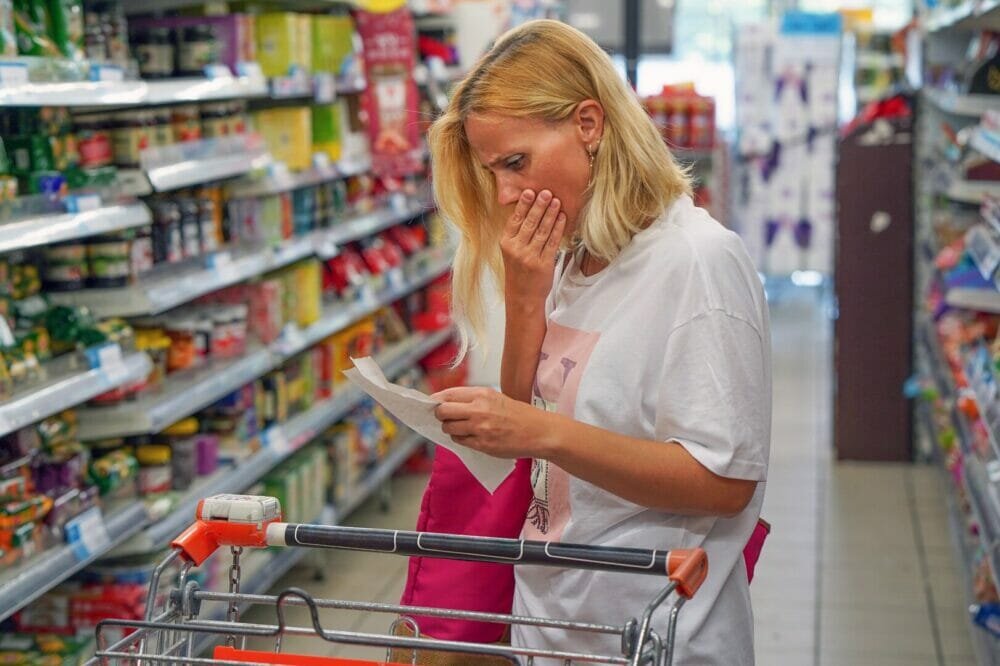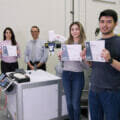Steps that food processors can take to help prevent the circulation of unsafe food during the cost-of-living crisis and beyond.
Research released by Trading Standards in England and Wales has revealed a worrying and growing trend in the fraud underworld, including treble the volume of counterfeit goods being seized in 2021/22. Indicative of the impact being felt by the ongoing cost-of-living crisis, rising energy costs and escalating food prices, the report highlights a significant increase in detriment scams, counterfeit goods, unsafe products and food fraud.
Drawing specific attention to the on-going cost-of-living challenges, the Impacts and Outcomes Report for 2021/22 by the Association of Chief Trading Standards Officers1 suggests that the risks to consumers from scams, counterfeit and illicit goods, and false and misleading prices are being exacerbated. Leading to greater brand-damaging exploitation by unscrupulous traders and suppliers.
Last year Trading Standards did a sterling job, removing 4.2 million unsafe or non-compliant products from the market place. Over 7000 businesses were identified as supplying food that was mis-described, did not correctly declare allergens, contained toxic or illegal components or was involved in food fraud.
So what can food processors do to ramp up their own fraud detection efforts? Jodie Curry, Commercial Manager at food safety and contaminant detection firm, Fortress Technology, suggests that it starts with strengthening defences on production lines. Installing metal detectors, checkweighers and food x-ray machines can be a practical way for food manufacturers to mitigate the risk of fraudulent activities infiltrating product integrity.
Stepping up the fight
During periods of heightened inflationary volatility and consumer uncertainty, falling prey to fraudulent activities worsens. Auditors refer to this as the ‘fraud triangle’, whereby motivation, opportunity and rationalisation merge to create a perfect – and more prolific – fraud storm. Getting ahead of future exploitations is the trick. Data reporting and controls, inspection systems, traceability documentation and creating a strong fraud prevention internal culture can help to deter counterfeiters trying their luck.
There are numerous authenticity deterrents. Nowadays, few genuine food producers operate lines without at least one contaminant inspection check on a production line. For many suppliers, metal detection is mandated by various schemes, including BRC, SQF and GFSI.
An anti-fraud culture, however, does require a collaborative and joined-up approach. In addition to national cooperation and rules set by international food safety authorities and border controls, food manufacturers themselves are accountable for implementing systems that will prevent, minimise or eliminate what is classed by authorities as being economically motivated adulteration. Activities of this nature in the EU are monitored, reported and shared through the EU Food Fraud Network. In England and Wales, they are documented by ACTSO in the annual Impacts and Outcomes Framework report.

While metal detection and x-ray inspection systems are great at identifying contaminants during the manufacturing process, rejecting products and providing a traceable farm to fork audit trail, fraud itself can be inherently harder to spot. For food manufacturers, responsible sourcing is the key to mitigating food fraud risks in the supply chain. There are tools that can help with this, including data analysis, sensor technology and DNA sequencing.
Food safety red flags
Food fraud can often be identified at the early stages with low-level non-compliance. Knowing that a supplier has invested in a respected food safety inspection system and has the data to back it up can be a deterrent for smaller-scale fraudsters. If a supplier is not willing to share details of their inspection system or participate in a risk assessment audit, that should provide food processors with an instant red flag alert.
Requesting access to traceable data system reports can be another deterrent. Manual records are more vulnerable as it’s easier for someone to alter and modify them. Automated record keeping, for instance the optional Contact 4.0 software from Fortress, helps processors keep track of and record logs for rejects, tests, settings etc. Other options include Communication Adapters such as Ethernet-IP and OPC/UA.
Label authentication
Consumer health and wellbeing in the last decade has pushed labelling higher up the agenda for regulatory bodies. Classed as fraud and a criminal offence, the mis-description of food deceives consumers. It can trick people into buying something they might not otherwise purchase. But of greatest concern, is it poses serious risks to people intolerant or allergic to certain foods.
EU mandatory obligations already require labels to specify the origin of specific food items, including honey, olive oil and most unprocessed meats. It’s also against the law to incorrectly or fail to describe a process, or wrongly state the volume of ingredients etc. Companies are increasingly being held to account for all of the label information that is published.
However, the authenticity of food labels are only effective if all the information can be verified against a reliable source, documented for traceability purposes and isn’t misleading. Also, regulations are frequently changed. Meaning it is the responsibility of the food industry to stay up-to-date with the legal requirements.
Although these label checks can be performed manually, it is extremely labour intensive, and prone to human errors. Installing smart cameras or an automated label verification system onto fast moving inspection lines may be advisable.
Product tampering
Replacing high value food items with cheap substitutes or adulterating products is a key target for fraudsters. Organic produce, cereals and grains, premium herbs, meat, seafood, and sugar products, including maple syrup and honey, are listed by Europol as the most commonly tampered food products.
If the quality of high value foods is being compromised, installing a metal detector designed for low profile products can help to determine if ultra thin metals are present. The Interceptor DF (Divergent Field) uses multiple fields to inspect products as they pass through the detector. This increases the probability of finding a small swarf, shaving, or flake of metal, regardless of the orientation.
Metal detectors can also address the issue of intentional sabotage. Farmers in Canada, for example, introduced customised Fortress bulk metal detectors following a spate of high profile potato sabotage cases.

Where there is additional risk of contamination from stone, glass, bone, rubber and plastic, then X-Ray is a vital addition to food processing operations. X-Ray is also crucial for inspecting products in metallised packaging, for example cans, tins or foil. In addition to food safety, an X-Ray machine can flag if there are any missing components in product i.e. specific ingredients in ready meals, missing chocolates in a box or meat absorbers in raw meat. It can also detect any broken or mispackaging that has occurred during the processing, helping to assure consumers of absolute quality of the end product.
Counteracting the counterfeiters
For food, it’s easy to be hoodwinked by something that resembles the real thing. Fraud is ultimately an opportunistic action. And when profit margins are being squeezed, it’s tempting to seek cheaper materials or ingredients.
Food manufacturers can counteract this by ensuring they and their suppliers implement robust inspection measures. Jodie concludes: “Products that have been tampered will inherently be of poorer quality. When corners are being cut, contaminants are more likely to be present, and underweight items might slip through the net.
“Although metal detection and inspection equipment might not spot fake foods, they can act as a very strong deterrent across the entire purchasing chain, especially during these challenging times when everyone is feeling the squeeze.”







